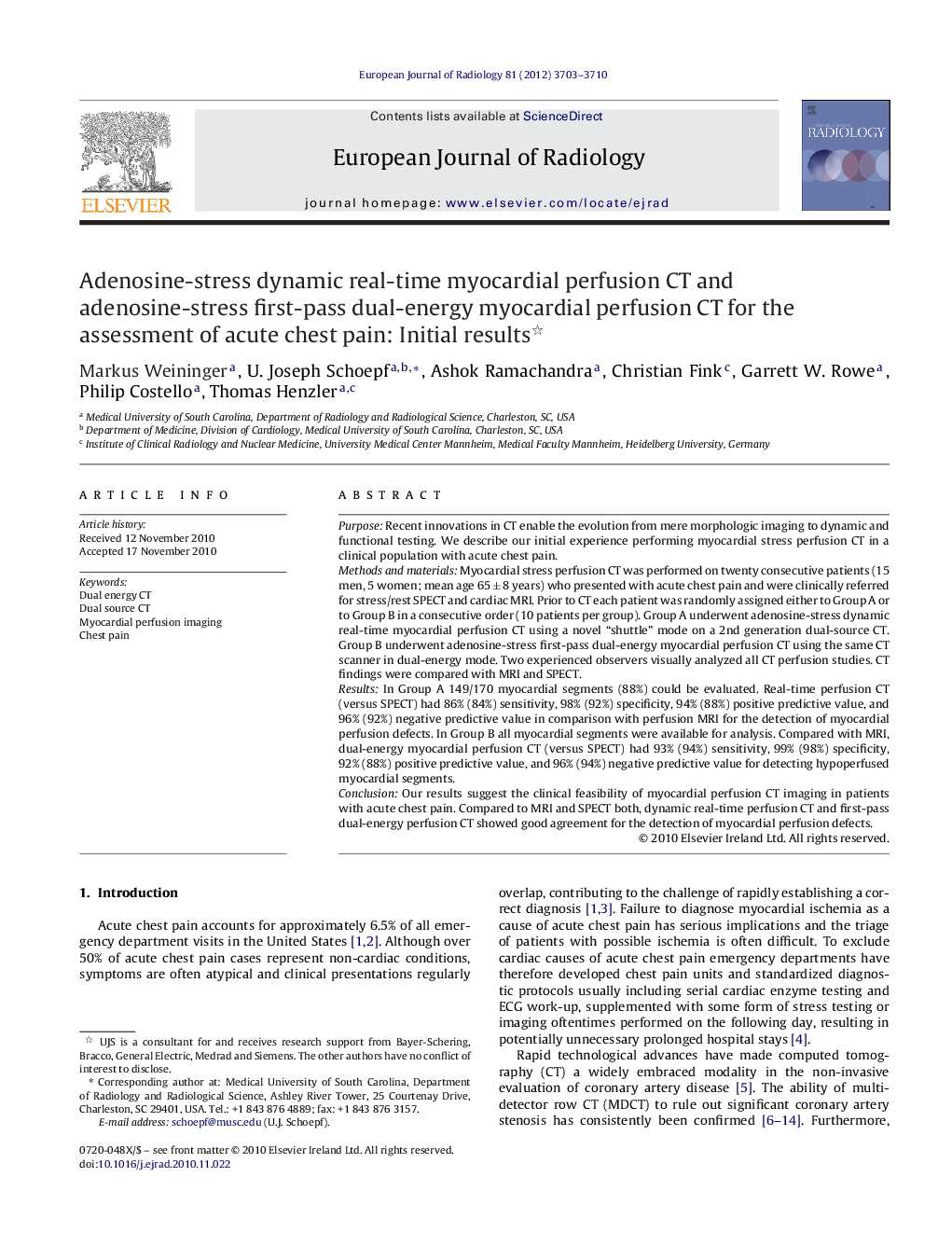| کد مقاله | کد نشریه | سال انتشار | مقاله انگلیسی | نسخه تمام متن |
|---|---|---|---|---|
| 6244692 | 1609783 | 2012 | 8 صفحه PDF | دانلود رایگان |

PurposeRecent innovations in CT enable the evolution from mere morphologic imaging to dynamic and functional testing. We describe our initial experience performing myocardial stress perfusion CT in a clinical population with acute chest pain.Methods and materialsMyocardial stress perfusion CT was performed on twenty consecutive patients (15 men, 5 women; mean age 65 ± 8 years) who presented with acute chest pain and were clinically referred for stress/rest SPECT and cardiac MRI. Prior to CT each patient was randomly assigned either to Group A or to Group B in a consecutive order (10 patients per group). Group A underwent adenosine-stress dynamic real-time myocardial perfusion CT using a novel “shuttle” mode on a 2nd generation dual-source CT. Group B underwent adenosine-stress first-pass dual-energy myocardial perfusion CT using the same CT scanner in dual-energy mode. Two experienced observers visually analyzed all CT perfusion studies. CT findings were compared with MRI and SPECT.ResultsIn Group A 149/170 myocardial segments (88%) could be evaluated. Real-time perfusion CT (versus SPECT) had 86% (84%) sensitivity, 98% (92%) specificity, 94% (88%) positive predictive value, and 96% (92%) negative predictive value in comparison with perfusion MRI for the detection of myocardial perfusion defects. In Group B all myocardial segments were available for analysis. Compared with MRI, dual-energy myocardial perfusion CT (versus SPECT) had 93% (94%) sensitivity, 99% (98%) specificity, 92% (88%) positive predictive value, and 96% (94%) negative predictive value for detecting hypoperfused myocardial segments.ConclusionOur results suggest the clinical feasibility of myocardial perfusion CT imaging in patients with acute chest pain. Compared to MRI and SPECT both, dynamic real-time perfusion CT and first-pass dual-energy perfusion CT showed good agreement for the detection of myocardial perfusion defects.
Journal: European Journal of Radiology - Volume 81, Issue 12, December 2012, Pages 3703-3710